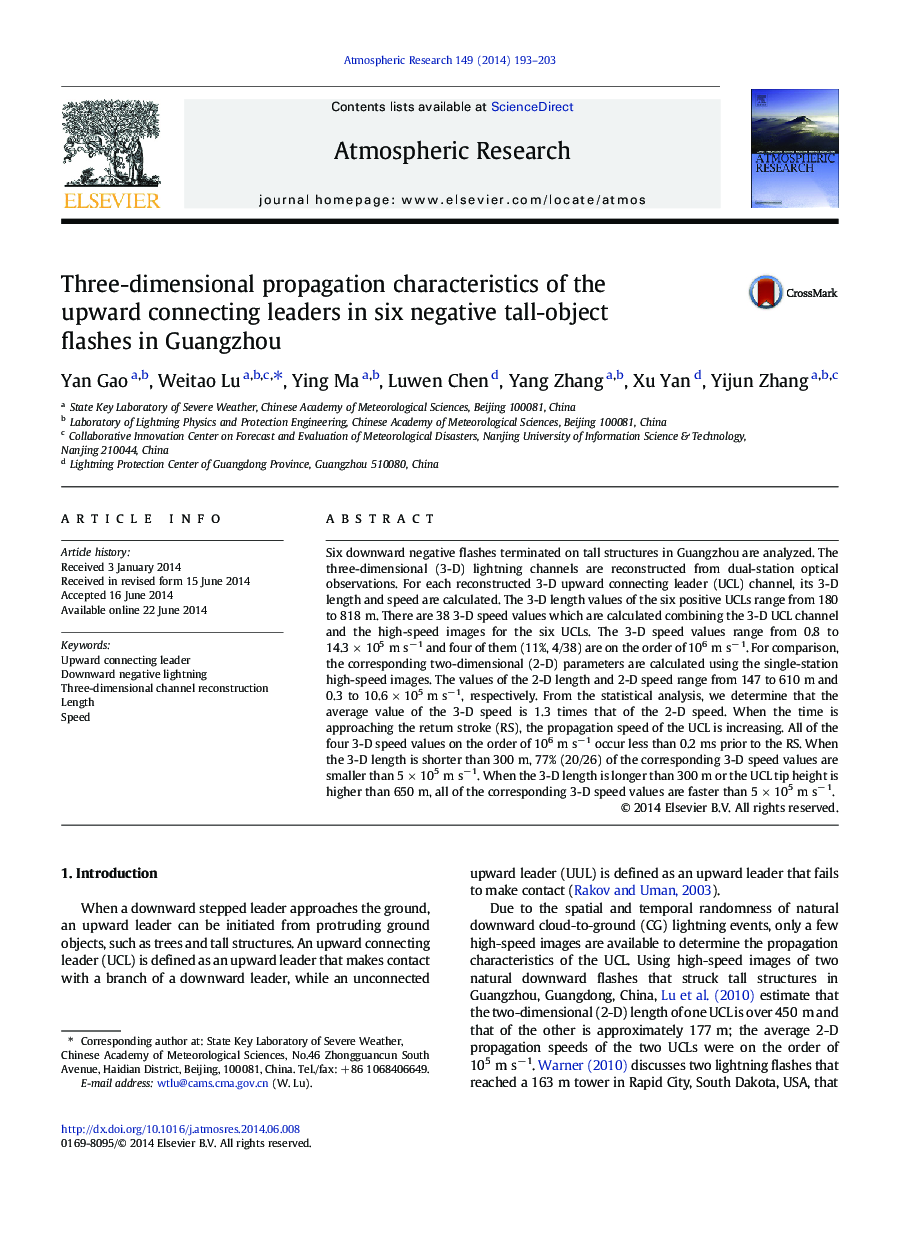| Article ID | Journal | Published Year | Pages | File Type |
|---|---|---|---|---|
| 6343525 | Atmospheric Research | 2014 | 11 Pages |
â¢A three-dimensional (3-D) lightning channel reconstruction method from dual-station optical observations is established.â¢The lightning channels of 6 positive upward connecting leaders (UCL) are 3-D reconstructed and their 3-D propagation characteristics are analyzed.â¢The average 3-D speed of 6 UCLs is approximately 1.3 times the average 2-D speed.
Six downward negative flashes terminated on tall structures in Guangzhou are analyzed. The three-dimensional (3-D) lightning channels are reconstructed from dual-station optical observations. For each reconstructed 3-D upward connecting leader (UCL) channel, its 3-D length and speed are calculated. The 3-D length values of the six positive UCLs range from 180 to 818 m. There are 38 3-D speed values which are calculated combining the 3-D UCL channel and the high-speed images for the six UCLs. The 3-D speed values range from 0.8 to 14.3 Ã 105 m sâ 1 and four of them (11%, 4/38) are on the order of 106 m sâ 1. For comparison, the corresponding two-dimensional (2-D) parameters are calculated using the single-station high-speed images. The values of the 2-D length and 2-D speed range from 147 to 610 m and 0.3 to 10.6 Ã 105 m sâ 1, respectively. From the statistical analysis, we determine that the average value of the 3-D speed is 1.3 times that of the 2-D speed. When the time is approaching the return stroke (RS), the propagation speed of the UCL is increasing. All of the four 3-D speed values on the order of 106 m sâ 1 occur less than 0.2 ms prior to the RS. When the 3-D length is shorter than 300 m, 77% (20/26) of the corresponding 3-D speed values are smaller than 5 Ã 105 m sâ 1. When the 3-D length is longer than 300 m or the UCL tip height is higher than 650 m, all of the corresponding 3-D speed values are faster than 5 Ã 105 m sâ 1.
